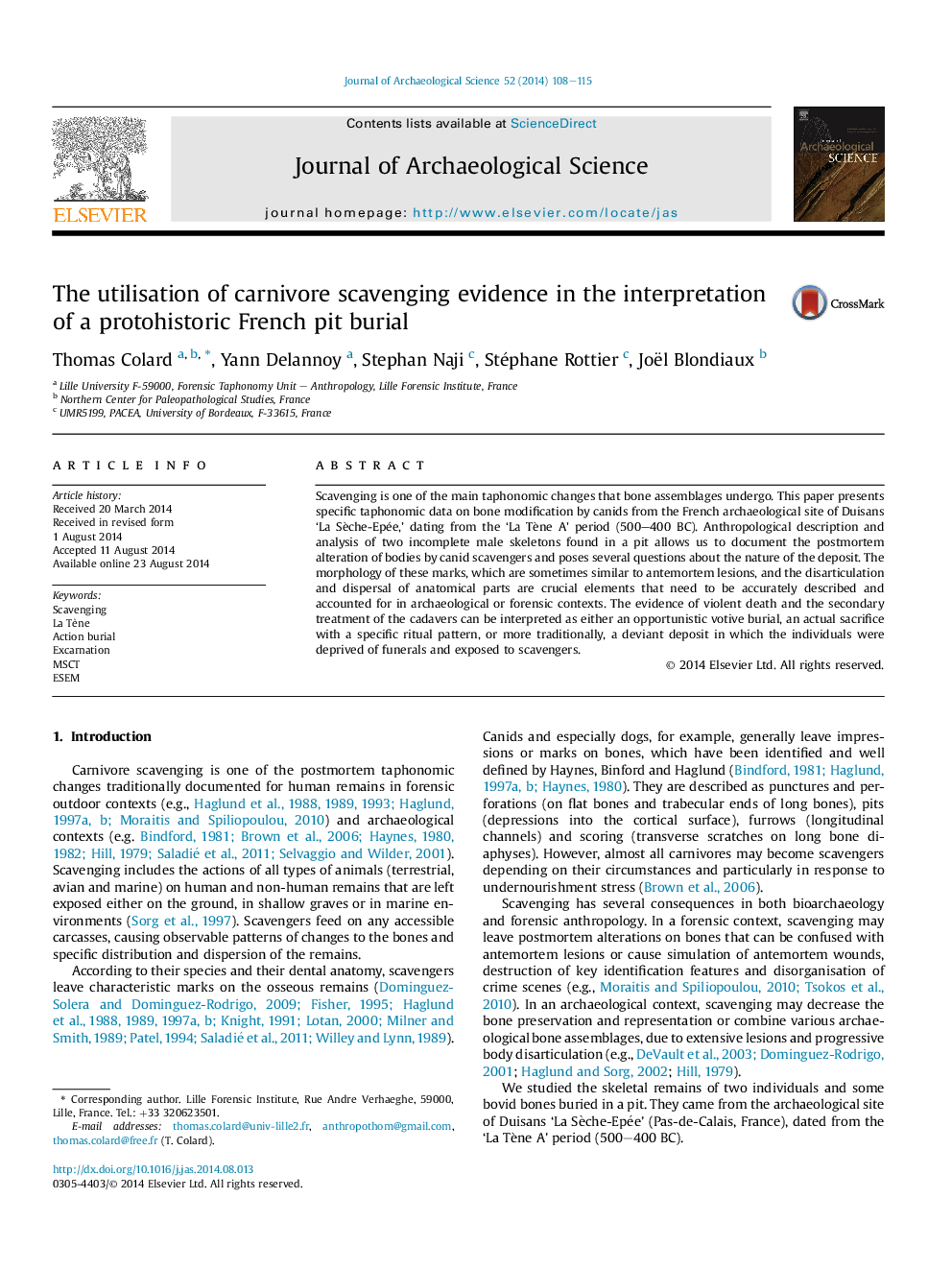| کد مقاله | کد نشریه | سال انتشار | مقاله انگلیسی | نسخه تمام متن |
|---|---|---|---|---|
| 7442609 | 1483908 | 2014 | 8 صفحه PDF | دانلود رایگان |
عنوان انگلیسی مقاله ISI
The utilisation of carnivore scavenging evidence in the interpretation of a protohistoric French pit burial
ترجمه فارسی عنوان
استفاده از شواهد جمع آوری گوشت خوک در تفسیر یک دفن گودال فرانسوی پیشقدم
دانلود مقاله + سفارش ترجمه
دانلود مقاله ISI انگلیسی
رایگان برای ایرانیان
کلمات کلیدی
موضوعات مرتبط
مهندسی و علوم پایه
مهندسی مواد
دانش مواد (عمومی)
چکیده انگلیسی
Scavenging is one of the main taphonomic changes that bone assemblages undergo. This paper presents specific taphonomic data on bone modification by canids from the French archaeological site of Duisans 'La Sèche-Epée,' dating from the 'La Tène A' period (500-400 BC). Anthropological description and analysis of two incomplete male skeletons found in a pit allows us to document the postmortem alteration of bodies by canid scavengers and poses several questions about the nature of the deposit. The morphology of these marks, which are sometimes similar to antemortem lesions, and the disarticulation and dispersal of anatomical parts are crucial elements that need to be accurately described and accounted for in archaeological or forensic contexts. The evidence of violent death and the secondary treatment of the cadavers can be interpreted as either an opportunistic votive burial, an actual sacrifice with a specific ritual pattern, or more traditionally, a deviant deposit in which the individuals were deprived of funerals and exposed to scavengers.
ناشر
Database: Elsevier - ScienceDirect (ساینس دایرکت)
Journal: Journal of Archaeological Science - Volume 52, December 2014, Pages 108-115
Journal: Journal of Archaeological Science - Volume 52, December 2014, Pages 108-115
نویسندگان
Thomas Colard, Yann Delannoy, Stephan Naji, Stéphane Rottier, Joël Blondiaux,
